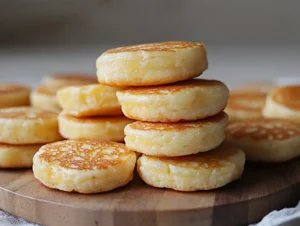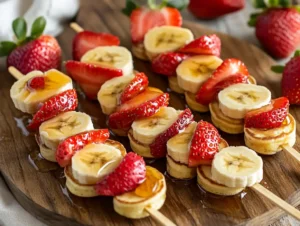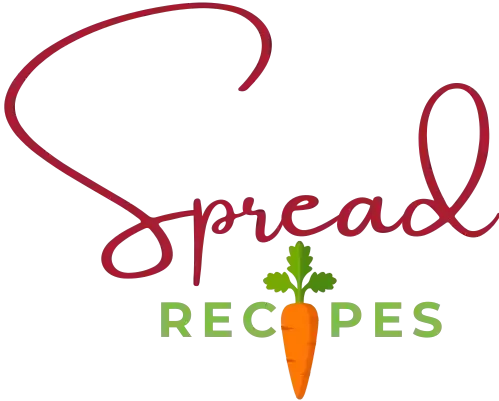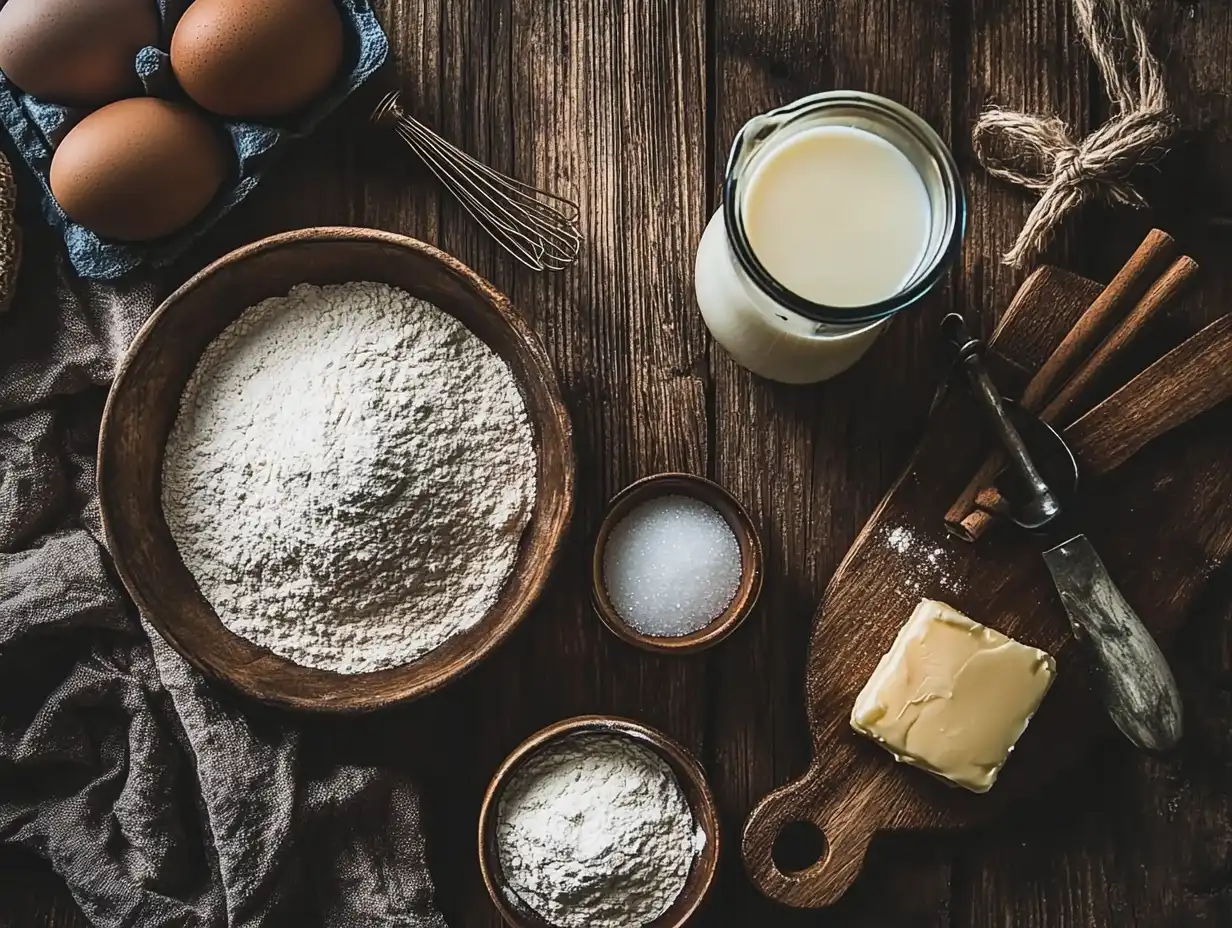Mini pancakes have become a favorite breakfast option, capturing the hearts of food enthusiasts worldwide. These bite-sized delights are a fun twist on the classic pancake, known for their versatility and ease of preparation. But have you ever wondered, what are mini pancakes made of?
In this article, we’ll break down the ingredients that give mini pancakes their signature fluff and irresistible flavor. From everyday pantry staples to creative variations, you’ll learn everything needed to recreate these tiny breakfast wonders. Whether you’re a seasoned cook or new to the kitchen, this guide will help you master these charming creations with ease.
The Basics of Mini Pancakes
The Key Ingredients
At their core, use the same foundational ingredients as regular. These include:
- Flour: The base ingredient that provides structure. All-purpose flour is the most common choice, though variations like whole wheat or gluten-free flour are also popular.
- Eggs: These are essential for binding the ingredients and contributing to the fluffy texture.
- Milk: It hydrates the batter and makes it smooth and pourable. Dairy alternatives such as almond milk or oat milk can also be used.
- Sweetener: A small amount of sugar, honey, or maple syrup adds a hint of sweetness.
- Baking Powder or Baking Soda: These leavening agents are critical for creating the light, airy texture.
- Butter or Oil: Adds richness to the batter and prevents sticking during cooking.
Looking for more ingredient-based inspiration? Check out “Sweet Breakfast Recipes to Brighten Your Mornings” for additional tips and ideas.
Common Variations in Recipes
While the classic ingredients are a go-to for most recipes, mini pancakes also lend themselves to creative variations:
- Flavor Additions: Vanilla extract, cinnamon, or nutmeg can enhance the flavor.
- Nutritional Boosts: Adding chia seeds, protein powder, or finely grated vegetables like zucchini or carrot can make them more nutritious.
- Dietary Adjustments: Substituting ingredients to create gluten-free, dairy-free, or vegan versions is increasingly popular.
Essential Ingredients for Fluffy Mini Pancakes
The hallmark of mini pancakes is their soft and fluffy texture. Achieving this consistency requires a careful selection and balance of ingredients.
Flour as the Foundation
Flour serves as the backbone of any pancake recipe. For mini pancakes, all-purpose flour is commonly used due to its versatile properties, offering the perfect balance of structure and tenderness. Other options include:
- Whole Wheat Flour: Adds a nuttier flavor and a boost of fiber.
- Gluten-Free Flour Blends: For those with gluten intolerance, these blends maintain a similar texture when paired with xanthan gum.
- Almond or Coconut Flour: These are great for low-carb diets, though they may require additional binding agents.
Choosing the right flour impacts the texture and flavor, making it an essential consideration.
Eggs and Their Role in Texture
Eggs are indispensable in mini pancake batter, offering both structure and moisture. They serve two primary functions:
- Binding Agent: Eggs keep the ingredients together, ensuring the pancakes hold their shape.
- Leavening Support: The proteins in eggs help to trap air, contributing to the fluffiness.
For vegan options, substitutes like flaxseed meal mixed with water or commercial egg replacers work well, though they may alter the texture slightly.
Milk or Dairy Alternatives
Milk acts as the liquid base, helping to blend the dry ingredients into a smooth batter. While regular milk is the traditional choice, non-dairy options like almond milk, soy milk, or oat milk are great for those with dietary restrictions.
- Buttermilk: A popular variation, buttermilk adds a tangy flavor and reacts with baking soda to enhance fluffiness.
- Coconut Milk: For a tropical twist, coconut milk imparts a subtle sweetness and creaminess.
The choice of milk affects not only the flavor but also the texture of the pancakes, offering endless customization opportunities.
Sweeteners and Flavor Additives
Mini pancakes often contain a hint of sweetness to complement toppings like syrup or fruit. Common sweeteners include:
- Granulated Sugar: A small amount helps balance flavors without overwhelming.
- Brown Sugar or Coconut Sugar: These options add a deeper, caramel-like flavor.
- Honey or Maple Syrup: Natural alternatives that dissolve easily into the batter.
For extra flavor, ingredients like vanilla extract, cinnamon, or a dash of nutmeg can elevate the pancakes to a gourmet level.

The Science Behind Perfect Mini Pancakes
Cooking mini pancakes isn’t just about mixing ingredients; there’s a bit of science involved in achieving their signature lightness and texture.
Why Baking Powder or Soda Is Key
Leavening agents like baking powder and baking soda are crucial for creating fluffy pancakes. Here’s how they work:
- Baking Powder: Contains both an acid and a base. When mixed with liquid, it produces carbon dioxide bubbles, causing the batter to rise during cooking.
- Baking Soda: Requires an acidic ingredient like buttermilk or yogurt to activate. It not only helps the pancakes rise but also enhances the browning effect, giving them a golden hue.
Using the right amount of leavening agents ensures that the pancakes puff up without becoming overly dense or collapsing.
Balancing Liquid and Dry Ingredients
The ratio of wet to dry ingredients directly impacts the texture of mini pancakes. Here’s why balance matters:
- Too Much Liquid: Results in a thin batter that spreads too much, yielding flat and flimsy pancakes.
- Too Little Liquid: Leads to a thick, lumpy batter, making the pancakes dense and unevenly cooked.
The ideal batter consistency is smooth yet slightly thick, allowing it to hold its shape on the griddle while spreading just enough to create those perfectly round mini pancakes.
The Role of Mixing Technique
Mixing might seem straightforward, but overmixing pancake batter can lead to tough and rubbery pancakes. Here’s why:
- Overmixing Activates Gluten: Flour contains gluten, which provides structure. Overmixing develops too much gluten, making the pancakes chewy instead of soft.
- Lumps Are Okay: A slightly lumpy batter is desirable as it prevents overworking the ingredients and ensures fluffier pancakes.
To avoid overmixing, gently fold the wet and dry ingredients together until just combined.
The Perfect Cooking Temperature
The right cooking temperature ensures that mini pancakes are evenly cooked with a golden exterior. Ideally, you want to:
- Preheat the Pan: Use a nonstick skillet or griddle, preheated over medium heat. A drop of water should sizzle when it hits the surface.
- Cook in Small Batches: Mini pancakes cook quickly, so keeping a steady temperature is key to avoiding burnt edges or undercooked centers.
For ideas to maintain the warmth and crispness of your pancakes for gatherings, see “How Do You Keep Mini Pancakes Warm for a Party?”.
Are Mini Pancakes Different from Regular Pancakes?
While mini pancakes share the same basic ingredients and preparation techniques as traditional pancakes, their size and serving style create unique culinary experiences. Let’s explore the differences and how they elevate the pancake experience.
Size and Cooking Time Variations
The most obvious distinction between mini pancakes and regular pancakes is their size. Mini pancakes are typically about 2–3 inches in diameter, making them bite-sized. This smaller size impacts:
- Cooking Time: Mini pancakes cook much faster, often requiring just 1–2 minutes per side.
- Batch Cooking: Since they’re small, you can fit multiple pancakes on a single griddle or skillet, making them ideal for feeding a crowd.
- Portion Control: Their smaller size allows for better portioning, whether as a breakfast option, snack, or dessert.
The compact size also makes them perfect for kids or as a playful addition to any meal.
Unique Serving and Topping Options
Mini pancakes lend themselves to a variety of creative serving styles:
- Pancake Cereal: A trendy way to serve, where dozens of tiny pancakes are served in a bowl with milk or syrup.
- Skewers: can be threaded onto skewers with fruit and drizzled with chocolate or honey for a fun presentation.
- Dipping Platters: Serve with small bowls of sauces like maple syrup, melted chocolate, or fruit compotes for dipping.
Their versatility in presentation makes mini pancakes a hit for breakfast, brunch, or even dessert tables.
Taste and Texture Differences
The smaller size of mini pancakes slightly changes their texture and flavor dynamics:
- Crispy Edges: The small size allows for a higher ratio of crispy edges to soft centers compared to larger pancakes.
- Even Cooking: Mini pancakes cook evenly throughout due to their small surface area, minimizing undercooked centers.
- Bite-Sized Flavor Bursts: With toppings spread evenly across the mini pancakes, every bite is packed with flavor.
While they share the same core ingredients, these differences in size and cooking techniques make mini pancakes a distinct and delightful variation on the traditional pancake.
Popular Variations and International Twists
Explore global twists like Dutch poffertjes or dessert-inspired mini pancakes with chocolate chips or fruit purée. Discover the cultural diversity of pancakes and learn creative twists by exploring “What Is Another Name for Mini Pancakes?”.
Dutch Poffertjes – The Mini Pancake Origin?
The Netherlands is often credited with the origin of mini pancakes in the form of poffertjes, small, fluffy pancakes traditionally made with yeast and buckwheat flour.
- Key Characteristics: Poffertjes are softer and airier than classic pancakes, often cooked in a special pan with shallow indentations to create a uniform round shape.
- Serving Style: Typically served warm, dusted with powdered sugar, and topped with a pat of butter or syrup.
- Cultural Significance: Poffertjes are a staple at Dutch festivals and markets, beloved for their delicate, melt-in-your-mouth texture.
This international twist shows how mini pancakes can also carry cultural significance while being deliciously versatile.
Gluten-Free and Vegan Mini Pancakes
As dietary preferences evolve, mini pancakes have been adapted to accommodate gluten-free and vegan lifestyles without sacrificing flavor.
- Gluten-Free Options: Substitute all-purpose flour with almond flour, oat flour, or gluten-free baking mixes. A touch of xanthan gum can help bind the ingredients.
- Vegan Variations: Replace eggs with flaxseed meal (1 tablespoon flaxseed + 3 tablespoons water) or mashed banana. Plant-based milk such as almond, soy, or oat milk works well in place of dairy.
These adaptations ensure that everyone, regardless of dietary restrictions, can enjoy the delight of mini pancakes.
Mini Pancakes for Special Diets
Mini pancakes are endlessly customizable, making them suitable for various special diets. Examples include:
- Keto Mini Pancakes: Made with almond flour, coconut flour, and cream cheese for a low-carb option.
- High-Protein Pancakes: Incorporate protein powder, Greek yogurt, or cottage cheese to increase the protein content.
- Low-Sugar Pancakes: Use natural sweeteners like stevia or unsweetened applesauce to keep the sugar content minimal.
These dietary variations cater to health-conscious individuals while retaining the essence of this breakfast staple. For a nutritional take on sweet breakfast ideas, visit “Can You Have Dessert for Breakfast? Tips and Healthy Alternatives”.
Dessert-Inspired Mini Pancakes
For a sweet twist, mini pancakes can double as a dessert by incorporating chocolate chips, cocoa powder, or fruit purees into the batter.

- Chocolate Lovers: Add cocoa powder and top with whipped cream and chocolate drizzle.
- Fruity Delight: Mix pureed berries into the batter and garnish with fresh fruit and honey.
- Caramel Bliss: Drizzle with caramel sauce and sprinkle with sea salt for a decadent treat.
Whether you prefer classic or creative, mini pancakes’ adaptability ensures there’s a version for everyone.
How to Make Mini Pancakes at Home
Creating mini pancakes at home is a fun and rewarding experience. With the right tools, ingredients, and techniques, you can whip up these delightful bites for breakfast, brunch, or even as a snack. Let’s break down the process step by step.
Tools You Need
Before you start, make sure you have the following tools ready:
- Nonstick Skillet or Griddle: Essential for ensuring even cooking and preventing sticking.
- Measuring Cups and Spoons: For precise measurements of ingredients.
- Small Ladle or Squeeze Bottle: These help create uniform, round.
- Spatula: A small, flexible spatula works best for flipping.
- Mixing Bowls: Separate bowls for wet and dry ingredients make the mixing process easier.
Optional tools like a mini pancake pan or a batter dispenser can make the process even more convenient.
Step-by-Step Recipe Guide
Ingredients:
- 1 cup all-purpose flour
- 1 tablespoon sugar
- 1 teaspoon baking powder
- 1/4 teaspoon salt
- 3/4 cup milk (or non-dairy alternative)
- 1 large egg
- 2 tablespoons melted butter (or oil)
- 1 teaspoon vanilla extract
Instructions:
- Mix Dry Ingredients: In a mixing bowl, combine flour, sugar, baking powder, and salt. Stir until evenly mixed.
- Prepare Wet Ingredients: In another bowl, whisk together milk, egg, melted butter, and vanilla extract.
- Combine Wet and Dry: Gradually pour the wet ingredients into the dry ingredients, stirring gently until just combined. Avoid overmixing; the batter should be slightly lumpy.
- Heat the Pan: Preheat a nonstick skillet or griddle over medium heat. Lightly grease the surface with butter or oil.
- Cook the Pancakes: Using a small ladle or squeeze bottle, pour about 1 tablespoon of batter onto the pan for each pancake. Leave space between pancakes to allow for flipping.
- Flip and Finish: Once bubbles form on the surface and the edges look set (about 1–2 minutes), flip the pancakes carefully. Cook for another minute until golden brown.
- Serve and Enjoy: Stack the mini pancakes and serve with your favorite toppings, such as syrup, fruit, whipped cream, or chocolate drizzle.
Tips for Achieving the Perfect Size and Shape
- Use a Squeeze Bottle: For consistent shapes, transfer the batter into a clean squeeze bottle and pipe small circles directly onto the pan.
- Control the Heat: Medium heat is best. High heat can burn the pancakes before they’re cooked through.
- Work Quickly: Mini pancakes cook fast, so be prepared to flip and remove them promptly to prevent overcooking.
With practice and attention to detail, you’ll soon be making perfect mini pancakes that look and taste amazing.
FAQs About Mini Pancakes
Mini pancakes often spark curiosity about preparation, customization, and health benefits. Here are answers to some of the most commonly asked questions to help you perfect your pancake game.
Can I Use Pancake Mix to Make Mini Pancakes?
Absolutely! Pancake mix is a convenient option for making mini pancakes. To adapt the mix for smaller portions:
- Follow the package instructions for mixing the batter.
- Ensure the batter is not too runny to maintain the shape of the mini pancakes.
- Use a squeeze bottle or spoon to portion out small amounts onto the griddle.
Pancake mix simplifies the process while still allowing you to customize flavors with added vanilla, cinnamon, or fruit.
Are Mini Pancakes Healthy?
Mini pancakes can be part of a balanced diet when made with wholesome ingredients. Here’s how you can enhance their nutritional value:
- Whole Grains: Use whole wheat or oat flour instead of refined flour.
- Natural Sweeteners: Replace sugar with honey, maple syrup, or mashed banana.
- Toppings: Opt for fresh fruit, yogurt, or nuts instead of sugary syrups.
What Toppings Work Best with Mini Pancakes?
Mini pancakes are incredibly versatile and pair well with various toppings. Popular options include:
- Classic Syrup: Maple syrup or honey for a traditional touch.
- Fruits: Fresh berries, sliced bananas, or apple compote for natural sweetness.
- Savory Options: Cream cheese, smoked salmon, or avocado for a savory twist.
- Dessert-Inspired: Whipped cream, chocolate chips, or caramel drizzle for indulgence.
Experimenting with toppings ensures that mini pancakes never get boring!
Can I Make Mini Pancakes Ahead of Time?
Yes, mini pancakes are ideal for meal prep and can be stored for later use:
- Refrigerate: Store in an airtight container for up to 3 days. Reheat in the microwave or toaster for a quick snack.
- Freeze: Place pancakes in a single layer on a baking sheet, freeze until firm, then transfer to a freezer-safe bag. They’ll keep for up to 2 months.
What’s the Best Way to Get Evenly Sized Mini Pancakes?
Consistency in size ensures uniform cooking and an appealing presentation. Use these tools:
- A small cookie scoop or tablespoon to portion batter evenly.
- A squeeze bottle to pipe out precise amounts of batter.
- A mini pancake pan with indentations for perfectly round shapes.
With the right technique, every pancake can look picture-perfect.
Can Mini Pancakes Be Customized for Special Occasions?
Absolutely!they are a blank canvas for creativity:
- Birthdays: Add sprinkles to the batter for festive, colorful pancakes.
- Holiday Themes: Incorporate pumpkin spice for fall or peppermint extract for winter.
- Party Platters: Serve on skewers with fruit for a fun and shareable treat.
Conclusion
Mini pancakes are a versatile and delightful dish that brings a fresh twist. From their simple ingredients to endless creative variations, these bite-sized treats cater to every palate and dietary preference. Perfect for breakfast, snacks, or dessert, they offer a combination of charm, flavor, and adaptability, making them a favorite for all occasions.
Understanding the ingredients and techniques behind these little pancakes can help you recreate their magic at home. With some practice and creativity, you’ll have a new go-to recipe for your table. Why wait? Start exploring the fun and flavor of mini pancakes today!
Explore more on this topic: “What Are Mini Pancakes Made Of?” for the original guide and additional tips.

